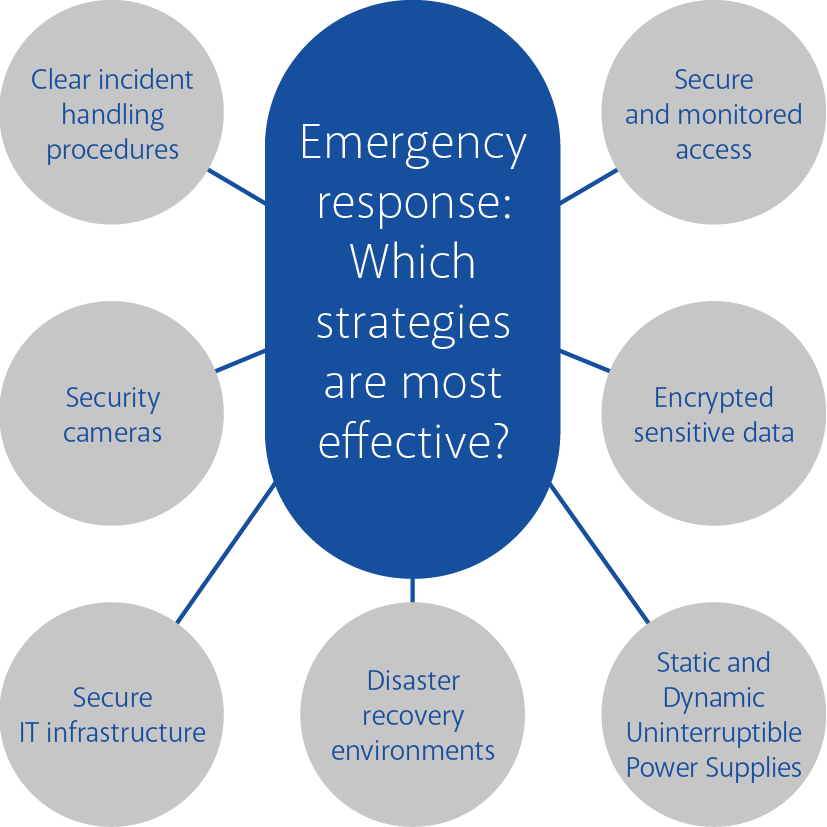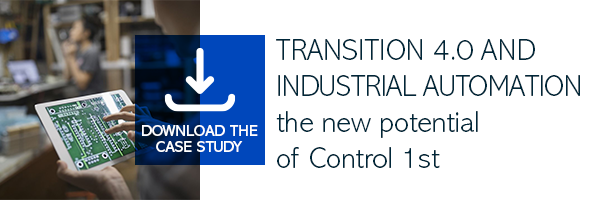Safety and security are two sides of the same coin. While security deals with protection against intentional damage caused by external factors such as theft or cyber-attacks, safety focuses on the prevention of unintentional damage caused by physical hazards such as accidents or natural disasters. However, the two definitions are united by a single distinctive approach that sees the convergence of proactivity and reactivity, in terms of taking action in response to potential threats and downstream of an incident.
But how do the concepts of safety and security differ in practice?
Safety and security: the main differences
The main differences can be summarised in 4 points:
-
Prevention and protection. Typically, safety measures are implemented in advance to prevent direct or collateral injuries or incidents from occurring. In contrast, security measures are implemented in response to criminal activity or violence that has already occurred.
-
Scope. The scope of security is much broader than that of safety and can be international. For example, governments are responsible for ensuring the safety of their citizens by implementing measures to secure borders and airspace (homeland security). Although security measures are essential to protect individuals and organisations from physical harm, security measures cover a wider range of areas such as physical infrastructure, information technology and all aspects of national security. For example, physical security measures such as locks and alarm systems are designed to prevent unauthorised access, while cyber security measures aim to protect against online threats and data breaches.
-
Education and training. Safety is usually addressed through education and training programmes aimed at making individuals aware of potential hazards and how to avoid them. In contrast, security risks are often addressed through technology and security measures. This approach involves implementing solutions such as barriers, surveillance cameras and access control systems to prevent deliberate damage. For example, a bank may install security cameras to deter theft, or an airport may use metal detectors in a screening area to prevent passengers from carrying weapons.
-
Timing. One of the main differences between safety and security incidents is the time frame in which they occur. The former can occur unexpectedly and are usually the result of unforeseen events. For example, slips, trips, electrocutions or falls can occur at any time and are often the result of human error or environmental factors (natural disasters such as earthquakes or hurricanes can occur without warning and cause significant damage). In contrast, security incidents are almost always planned in advance and may take time to implement. For example, a terrorist organisation may take months or even years to plan an attack, gather intelligence and develop a plan of action. Similarly, a cybercriminal may spend weeks or months researching vulnerabilities in a network before launching an attack.
8 best practices to promote for a safe working environment
To be effective on the prevention side, it is important for the security manager to promote the following best practices:

-
Establish clear procedures and security protocols.
-
Carry out regular audits and inspections.
-
Invest in quality equipment and materials.
-
Encourage employees to report unsafe conditions or practices.
-
Promote a culture of safety in the workplace.
-
Establish clear consequences for safety violations.
-
Reward the best performers.
-
Invest in training and development programmes.
All these good practices are reflected in specific industries, requiring expertise and targeted action plans. In the construction sector in particular, safety is a top priority and requires investment in personal protective equipment, fall protection systems, scaffolding and equipment inspection protocols. In healthcare, safety measures include infection control protocols, patient identification procedures, drug protection and safe handling of hazardous materials. Similarly, in manufacturing and transport, the focus is on worker protection, prevention of accidents involving machinery and vehicles or, more specifically, ergonomics and handling of hazardous materials, traffic control systems and emergency response procedures. Finally, sectors such as the food and hospitality industry face issues related to fire, food safety and crowd control. Safety measures to be taken include fire alarm systems, fire extinguishers, food storage and temperature monitoring, evacuation plans and food safety training.
Emergency response: which strategies are most effective?
Even in the field of security, best practices need to be ensured. Here are the key ones:
-
Establish clear procedures for dealing with incidents
-
Ensure that access are secure and monitored
-
Install privacy compliant security cameras
-
Encrypt sensitive data and back it up regularly
-
Install an IT infrastructure that is adequately protected both physically and logically.
-
Provide one or more disaster recovery environments where appropriate
-
Provide static and dynamic uninterruptible power supplies to adequately cope with power outages and ensure business continuity and business continuity.

Security and safety are two distinct concepts, both fundamental to the protection of individuals and societies. The objectives, scope, responsibilities, approaches, timeframes, threats and regulations are different: understanding these differences is crucial for security managers in public and private organisations, so that they can develop increasingly effective knowledge and tools aimed at risk mitigation and adopt increasingly effective and comprehensive prevention measures.



